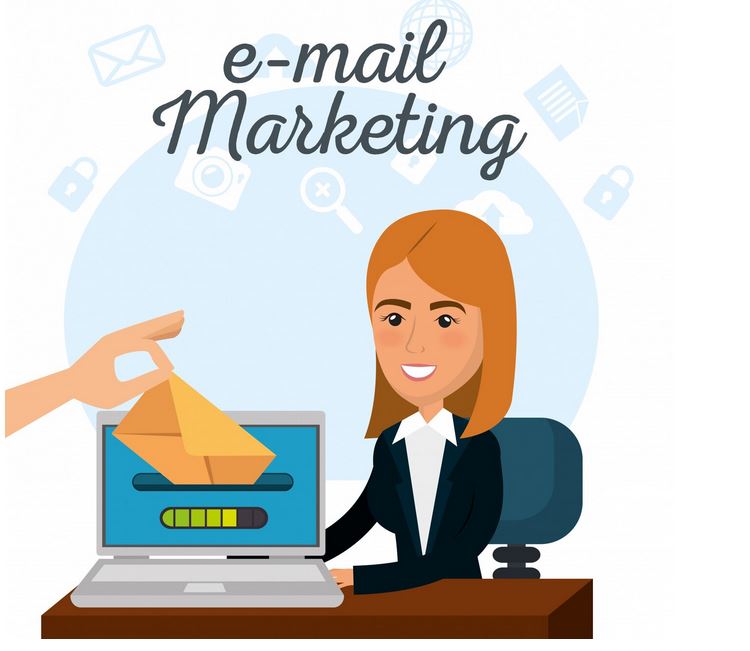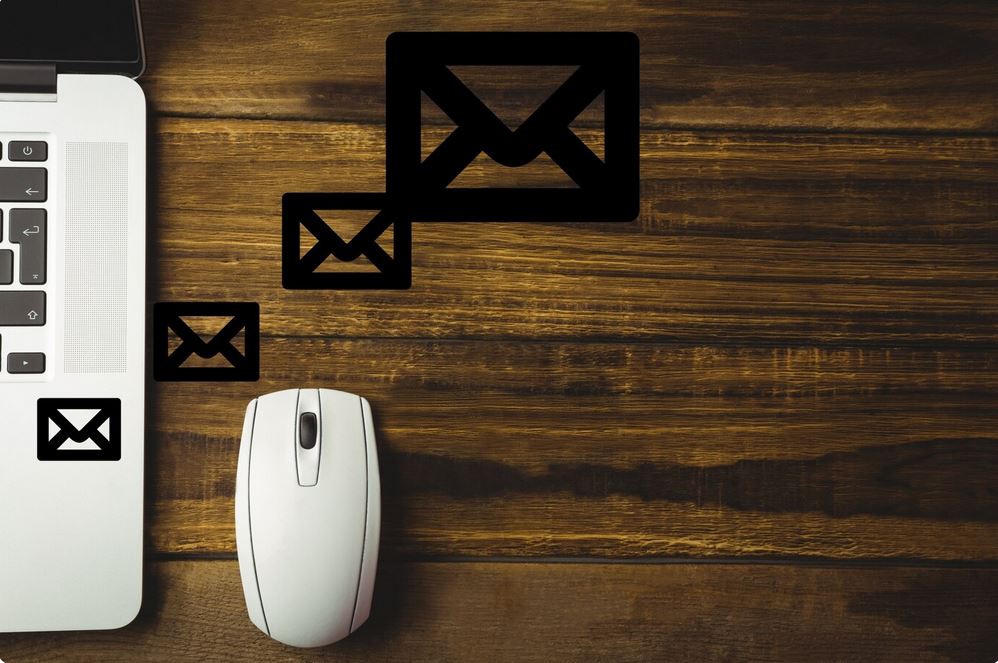How to Do Email Marketing: A Step-by-Step Guide

Email marketing remains a powerful tool for businesses to connect with audiences, drive conversions, and build lasting relationships. With platforms like GetResponse, you can streamline campaigns, leverage automation, and achieve a remarkable ROI—averaging $36–$42 per dollar spent. But how do you execute email marketing effectively? This 3000–3500-word guide, structured as questions, walks you through the process, from strategy to analytics, using GetResponse’s robust features to ensure success in 2025.
What Is Email Marketing and Why Does It Matter?
Why Is Email Marketing Essential for Businesses?
Why does email marketing remain a top strategy? It offers direct, personalized communication, bypassing the unpredictability of social media algorithms. According to GetResponse’s 2024 Benchmarks, email campaigns achieve a 39.52% open rate and 3.84% click-through rate (CTR) on average, making it ideal for nurturing leads and driving sales. Its versatility—spanning newsletters, promotions, and transactional emails—makes it indispensable.
How Does GetResponse Enhance Email Marketing?
What makes GetResponse a go-to platform? Its all-in-one solution includes AI-driven tools, 500+ responsive templates, and a 99% deliverability rate. Features like automation, landing pages, and webinars empower businesses to scale campaigns efficiently. For example, Jeanne-Marie’s case study shows a 91.3% open rate using GetResponse’s automated workflows. So, how do you start?
How Do You Define Your Email Marketing Goals?
Why Set Clear Objectives?
What’s the first step in email marketing? Define specific, measurable goals. Are you aiming to increase sales, boost brand awareness, or re-engage inactive subscribers? Clear objectives guide your strategy. For instance, GetResponse’s Conversion Funnel helps map goals like lead nurturing to sales, ensuring alignment with business outcomes.
What Are Common Email Marketing Goals?
What goals should you consider? Common ones include:
- Lead Generation: Capture new subscribers via sign-up forms.
- Customer Retention: Nurture existing customers with loyalty offers.
- Sales Conversion: Drive purchases through targeted promotions.
- Engagement: Increase opens and clicks with relevant content.
GetResponse’s analytics track progress toward these goals, showing metrics like a 5.02% CTR for triggered emails.
How Do You Align Goals with Audience Needs?
How do you ensure goals resonate? Understand your audience through surveys, purchase history, or website behavior. GetResponse’s custom fields let you segment by preferences, ensuring campaigns align with subscriber interests. For example, a retailer like Sephora might target loyalty members with point redemption emails.
How Do You Build a Quality Email List?
Why Avoid Purchased Lists?
Why is buying email lists a bad idea? It violates regulations like GDPR and CAN-SPAM, risking fines and spam complaints. GetResponse data shows purchased lists have low engagement, harming deliverability. Instead, grow your list organically with subscribers who opt in willingly.
How Can You Attract Subscribers?
What’s the best way to gain subscribers? Offer valuable lead magnets—eBooks, discounts, or webinars—to entice sign-ups. GetResponse’s pop-up forms and landing pages simplify this, with customizable designs that boost conversions. For example, a 15% discount for first-time subscribers can increase sign-ups by 20%, per HubSpot.
What Are Effective Sign-Up Strategies?
How do you diversify opt-in channels? Use multiple touchpoints:
- Website Forms: Place pop-ups or embedded forms on high-traffic pages.
- Social Media: Link to sign-up pages from posts or bios.
- Events/Webinars: Collect emails during registration, as GetResponse’s webinar tools support.
- In-Store: Offer QR codes for instant sign-ups.
Double opt-in, supported by GetResponse, confirms subscriber intent, reducing bounces and ensuring compliance.
How Do You Craft a Winning Email Campaign?
What Makes a Strong Subject Line?
Why do subject lines matter? They determine whether emails get opened. GetResponse’s 2024 report shows question-based subject lines achieve a 39.52% open rate. Keep them concise (under 70 characters) and use personalization, like names, to boost engagement. A/B testing via GetResponse helps identify top performers.
How Do You Design Engaging Emails?
What creates visually appealing emails? Use GetResponse’s 500+ mobile-responsive templates to ensure compatibility across devices, as 81% of emails are opened on mobile, per Litmus. Include clear CTAs above the fold and balance visuals with text. For example, a single, bold CTA like “Shop Now” can drive a 4.84% CTR, per GetResponse data.
What Content Drives Action?
How do you make emails compelling? Focus on value—solve problems or highlight benefits. Segment content based on user behavior, like past purchases, using GetResponse’s dynamic content tools. A welcome series, as seen in Allakando’s case study, can educate subscribers and guide them toward conversion.

How Do You Leverage Email Automation?
Why Use Automation?
What’s the advantage of automating emails? It saves time and ensures timely, relevant messages. GetResponse’s workflows trigger emails based on actions like sign-ups or abandoned carts, increasing conversions by 30%, per HubSpot. For example, a cart recovery email sent within an hour can recapture 10% of lost sales.
How Do You Set Up Automation Workflows?
What steps create effective automation? Use GetResponse’s drag-and-drop builder to design workflows with triggers like:
- Welcome Series: Onboard new subscribers with a multi-email sequence.
- Abandoned Cart: Remind users of unpurchased items.
- Re-Engagement: Target inactive subscribers with special offers.
Define conditions, like time delays or user actions, to personalize the journey. Jeanne-Marie’s 69.75% CTR came from such tailored automation.
How Does AI Enhance Automation?
Why integrate AI? GetResponse’s AI tools generate subject lines, content, and product recommendations, optimizing in real-time. AI-driven A/B testing refines elements, boosting CTRs by 3–5%. With 42% of marketers saving up to two hours weekly using AI, it’s a must-have for efficiency.
How Do You Optimize Email Deliverability?
Why Is Deliverability Critical?
What ensures emails reach inboxes? Deliverability, or inbox placement rate, is key to campaign success. GetResponse’s 99% deliverability rate stems from robust bounce management and ISP compliance. Poor deliverability, often due to invalid emails or low sender scores, can derail efforts.
How Can You Boost Sender Reputation?
What strengthens your sender score? Use a custom domain (not Gmail) and authenticate with SPF, DKIM, and DMARC, which GetResponse automates. Clean your list regularly to remove inactive subscribers, keeping bounce rates below 2% and spam complaints under 0.5%, per EmailDeliverablityReport.com.
How Do You Avoid Spam Filters?
What prevents emails from landing in spam? Test for spam triggers using GetResponse’s tools, avoiding phrases like “act now” or excessive punctuation. Ensure content is relevant and links are functional, as broken links raise red flags with ISPs.
When Should You Send Your Emails?
Why Does Timing Impact Performance?
How does send time affect results? Optimal timing depends on your audience. GetResponse’s Perfect Timing tool uses AI to send emails when subscribers are most active, boosting open rates to 45.38% for triggered emails. Without AI, aim for early mornings (7–9 AM) or midweek for B2B.
How Do You Find the Best Send Time?
What’s the best way to test timing? A/B test different days and times using GetResponse’s tools. For example, B2C campaigns may perform better on weekends, while B2B suits weekdays. Track open rates to refine your schedule, ensuring emails land when engagement is highest.
How Do You Measure Email Marketing Success?
What Metrics Should You Monitor?
Which KPIs matter most? Track:
- Open Rate: 39.64% average, with welcome emails at 83.63%.
- Click-Through Rate (CTR): 3.25% average, higher for targeted emails.
- Click-to-Open Rate (CTOR): 16.31%, showing content relevance.
- Conversion Rate: Measures actions like purchases.
- Unsubscribe/Bounce Rates: Keep below 0.5% and 2%, respectively.
GetResponse’s analytics dashboard provides real-time insights, simplifying tracking.
How Does A/B Testing Improve Campaigns?
Why test email elements? A/B testing subject lines, CTAs, or designs identifies what resonates. GetResponse supports testing up to five variants, with data showing image-heavy emails achieve a 4.84% CTR versus 1.64% for text-only. Log results to inform future campaigns.
Why Use Segmentation for Better Results?
How does segmentation enhance performance? Group subscribers by behavior or demographics using GetResponse’s tools. Targeted emails achieve 40.08% higher open rates, as seen in campaigns segmented by purchase history. For example, a retailer can send product-specific offers to boost conversions.
How Do You Ensure Legal Compliance?
Why Comply with Email Laws?
What happens if you ignore regulations? Laws like GDPR, CAN-SPAM, and CASL mandate consent and transparency. Non-compliance risks fines and reputational damage. GetResponse enforces opt-in rules and secure data handling to keep you compliant.
How Do You Implement Double Opt-In?
What’s the benefit of double opt-in? It verifies subscriber intent, reducing spam complaints and ensuring GDPR compliance. GetResponse’s double opt-in sends a confirmation email, filtering out invalid addresses and boosting list quality.
How Do You Handle Subscriber Data?
What’s the best way to manage data? Store subscriber information securely and never share it without consent. GetResponse’s data management tools comply with privacy laws, allowing easy export or deletion of records to meet regulations.
How Can GetResponse Streamline Your Strategy?
Why Is GetResponse a Top Platform?
What sets GetResponse apart? Its comprehensive features—AI content generation, automation, and analytics—make it ideal for beginners and experts. With a free plan for up to 500 contacts and a 30-day trial, it’s accessible. London Store’s 86% email revenue growth highlights its impact.
How Do GetResponse’s Tools Save Time?
What features boost efficiency? The drag-and-drop editor creates professional emails without coding, while automation handles repetitive tasks. AI tools generate content, and integrations with platforms like Shopify streamline workflows, saving hours weekly.
What Advanced Features Does GetResponse Offer?
How does GetResponse go beyond basics? Conversion Funnels manage the entire customer journey, from lead capture to sales. Webinars, landing pages, and AI-driven personalization enhance targeting, as seen in Jeanne-Marie’s 69.75% CTR from tailored campaigns.
How Do You Scale and Future-Proof Your Campaigns?
Why Embrace Emerging Trends?
How do you stay competitive? Adopt AI, mobile optimization, and privacy-first practices. GetResponse’s AI tools, like subject line generators, keep campaigns fresh. With 66% of consumers prioritizing data privacy, per HubSpot, transparent opt-ins are critical.
How Do You Balance Email Frequency?
What’s the right email cadence? Too frequent emails increase unsubscribes (aim for <0.5%), while too few lose engagement. GetResponse’s analytics help monitor subscriber reactions, letting you adjust frequency. For example, weekly newsletters suit active audiences, while monthly updates work for others.
Why Keep Testing and Iterating?
How do you ensure long-term success? Continuously test subject lines, content, and timing using GetResponse’s tools. Regular iteration, backed by analytics, drives higher open rates (up to 54.5% for non-profits) and conversions, keeping your strategy effective.

How Will You Start Your Email Marketing Journey?
What’s the next step? Email marketing, powered by GetResponse, offers a proven way to connect with audiences and drive results. Start by setting goals, building a quality list, crafting engaging campaigns, and leveraging automation and analytics. Test, segment, and stay compliant to maximize impact. Ready to begin? Explore GetResponse’s free plan at getresponse.com and turn these steps into action.
You might also be interested in Email Marketing Best Practices



